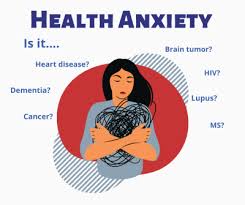Global Burden of Anxiety Disorders – WHO
Overview
Anxiety disorders are a quiet epidemic in the broad field of mental health, impacting people of all ages, socioeconomic backgrounds, and cultures. Anxiety disorders, which are characterized by excessive and ongoing worry, fear, and apprehension, include a wide range of conditions that can seriously affect a person’s capacity to operate on a daily basis and their quality of life. We examine the prevalence, effects, and public health ramifications of anxiety disorders as they affect people worldwide in this investigation.
An International View of Anxiety Disorder Prevalence
Anxiety disorders, which impact people of all ages and demographics, are among the most common mental health diseases globally. The World Health Organization (WHO) estimates that 284 million individuals worldwide suffered from anxiety disorders in 2017, making this a serious and expanding public health concern.
As a result of variations in socioeconomic conditions, healthcare systems, and cultural norms, anxiety disorders are not as common in different areas and nations. Generalized anxiety disorder (GAD) is the most frequent subtype of anxiety disorders, with a lifetime prevalence estimated to be between 10% and 30% in high-income countries like the United States and Europe.
Although anxiety disorders are also quite common in low- and middle-income nations, there may be a lack of awareness and treatment of them because of the difficulty in accessing mental health resources and services. Accessing adequate care can be impeded by cultural views, stigma, and misconceptions about mental illness, which can further prolong the time it takes to seek help.
Anxiety Disorders’ Effects: From Individual Pain to Social Costs
Anxiety disorders can significantly affect a person’s life by making it more difficult for them to operate well in a variety of contexts, such as the workplace, classroom, relationships, and day-to-day activities. Chronic anxiety, fear, and trepidation can impair focus, judgment, and problem-solving skills, which lowers performance and productivity.
Furthermore, co-occurring anxiety disorders can make diagnosis and treatment more difficult. These co-occurring illnesses include depression, substance use disorders, and somatic symptoms. For example, compared to people with either illness alone, those who have both anxiety and depression may have more severe symptoms, more disability, and worse treatment outcomes.
In addition to the agony that sufferers of anxiety disorders endure on a personal level, these illnesses have major societal implications. Anxiety-related disability, absenteeism, and lost productivity place a significant financial strain on healthcare systems, businesses, and society at large.
Additionally, inadequate or untreated anxiety disorders can exacerbate the cycle of discomfort and dysfunction by causing a host of unfavorable outcomes, such as substance misuse, social disengagement, and interpersonal issues. Anxiety disorders have an impact on families, communities, and society as a whole in addition to the person.
Knowing What Protective and Risk Factors Are
Numerous risk factors that may make people more susceptible to anxiety disorders have been found. Individuals’ susceptibility to anxiety disorders is shaped in large part by genetic predisposition, family history, and neurobiological factors; this emphasizes the significance of comprehending the interaction between nature and nurture.
Furthermore, negative childhood experiences—such as abuse, neglect, or trauma—have been connected to a higher chance of anxiety disorders in later life. Stressors experienced early in life have the potential to dysregulate the body’s stress response system, which can increase sensitivity to stressors in the future and put people at risk for anxiety and other mental health issues.
Environmental variables can also play a role in the onset and maintenance of anxiety disorders. These include long-term stress, poverty, and social injustice. People who have limited access to economic, healthcare, and educational possibilities may experience sentiments of pessimism, insecurity, and uncertainty, which makes them more prone to anxiety and discomfort.
On the other hand, a number of protective factors may lessen the likelihood of anxiety disorders occurring or act as a buffer against their detrimental consequences. Resilience and psychological well-being can be fostered by strong social support networks, caring connections, and constructive coping mechanisms, which can help people deal with stress and adversity more skillfully.
Encouraging Mental Wellness and Health
Preventive, early intervention, and access to high-quality mental health treatment are all important components of a comprehensive strategy to address the worldwide burden of anxiety disorders. Encouraging early recognition and help-seeking behaviors about anxiety disorders requires promoting mental health literacy, lowering stigma, and increasing public awareness of these conditions.
Additionally, including mental health services into primary care settings can aid in bridging the gap between those in need of care and the resources that are accessible. It is possible to assist guarantee that patients with anxiety disorders receive prompt and appropriate care by screening for anxiety disorders during routine medical visits, offering brief interventions and psychoeducation, and making referrals to specialized mental health services.
Additionally, by addressing underlying risk factors and promoting protective factors, community-based mental health promotion and preventive programs can help lower the incidence and prevalence of anxiety disorders. Community outreach programs, corporate wellness policies, and school-based treatments can give people the information, tools, and support they need to manage stress, develop resilience, and preserve their mental health.
In summary
To sum up, the prevalence of anxiety disorders throughout the world is a serious and expanding public health issue that has to be addressed immediately. Anxiety disorders have a devastating impact that spans nations and continents, affecting not just the personal suffering of affected individuals but also the financial burden they place on economies and healthcare systems.

